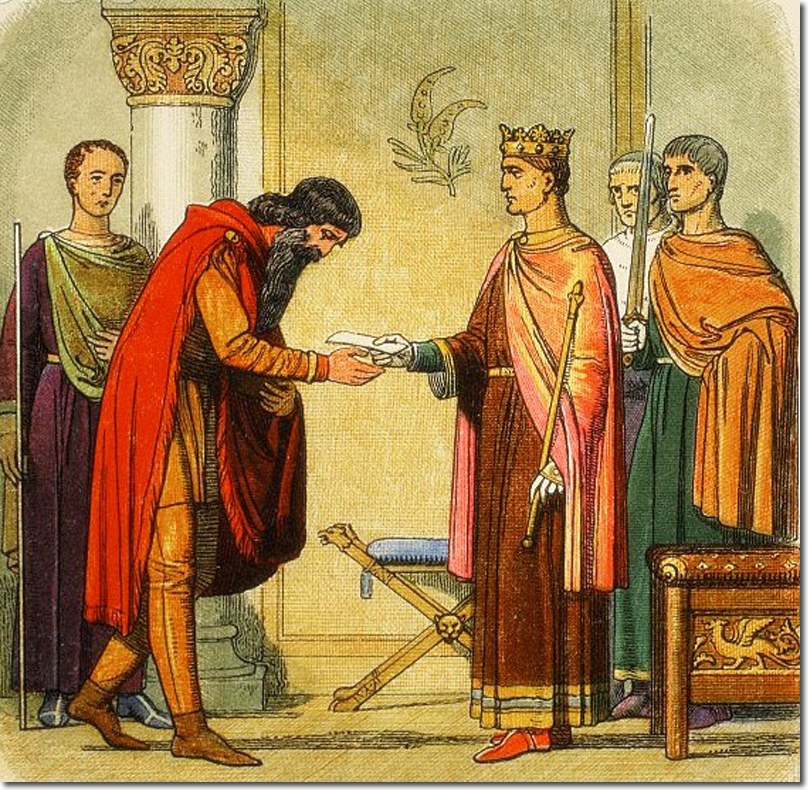Leinster Modal – L159.2 Mutation
 Our Adams family cluster has tested positive for L159.2 in three lines. I think it is safe to say all members of family group A033 will test positive for this because our origins are common.
Our Adams family cluster has tested positive for L159.2 in three lines. I think it is safe to say all members of family group A033 will test positive for this because our origins are common.
Results: R1b1a2a1a1b4f – L159.2+ haplogroup.
So what does this mean and what is the Leinster Modal?
The L159.2 mutation, or Leinster Modal, is found in descendents of the Ancient Kings of Leinster Ireland specifically Dermot MacMurrough. It means they are cousins of ours dating back 1,500 to 2,000 years (as I understand it anyway – Gerry, please correct me as needed). It is also associated with the R-Z255 mutation. In 2011, a new SNP – Z255 – was discovered and was ascertained to be upstream of L159.2. The Z255 and Subclades Project I link to below serves as a repository of data for both of the main lineages that inherit the distinctive Irish Sea Haplotype, which is mainly found around the Irish Sea coasts of Great Britain and the province of Leinster.
- Domnainn or Fir Domnann of Leinster Ireland
- The Dumnonii of Scotland – William Skene, the Scottish antiquarian, also mentioned the Domnonii of Scotland: “…the great nation of the Domnonii lay north of the Selgovae and Novantae, separated from them by the chain of hills which divides the northern rivers from the waters which flow into the Solway, extending as far north as the Tay. South of the Forth of Clyde they possessed the modern counties of Ayr, Lanark, and Renfrew, and, north of these estuaries, the counties of Dumbaton and Stirling and the districts of Menteith, Stratherne, and Fothreve, or the western half of the peninsula of fife. They thus lay in the centre of Scotland, and were the novae gentes whose territory Agricola ravaged.”
- Domnonii of Wales and Cornwall. From, “Celtic Scotland, the Picts, The Scots & the Welsh of Southern Scotland.” by H.M. Chadwick: “In Ptolemy’s map four peoples are located in the south of Scotland. The points of the compass are erroneously stated (cf. p. 72); but it is clear that he means to place the Noouantai in Galloway and perhaps Dumfries, and the Uotadinoi (written Otalinoi?) on the east side, between the Forth and the Tyne. The Selgouai lie between these two peoples, and the Dumnonioi (miswritten Damnioi, Damnonioi) north of the Selgouai, extending apparently from Ayshire into Perthshire. All these peoples are usually assumed to be British. But only one of them survived in later times – the Votadini, known as Guotodin, Gododdin, in early Welsh poetry. The Dumnonioi were presumably of the same stock as their namesakes in Devon and Cornwall (cf. Chapter v above). The latter were certainly British in later times; so it is inferred that the northern Dumnonioi were likewise British. But, as we have seen, another branch of the same stock is found in Ireland – the Domnainn or Fir Domnann of Leinster – and it is apparently nowhere suggested that they spoke any language but Irish“
There is some debate if these three peoples were really connected or not. I personally think they were based on what I have read thus far and that we know our Adams who came from Scotland back to Parrish of Cumber, Londonderry, Ulster Ireland around 1660 match the Leinster Modal.
To learn more you can go here:
http://www.familytreedna.com/public/R1b-L159.2/default.aspx/
- A number of families associated with the Kings of Leinster and Diarmaid MacMurchada (Dermot MacMurrough) are L159.2+: O’Byrne, Kavanaugh/Cavanaugh, and Kinsella.
- L159.2 is mostly found in coastal areas of the Irish Sea, including the Isle of Man and the Hebrides
- L159.2 can also be found in Norway, from Troms in the North, to Møre in the South. Whether it arrived there in the Viking Age or earlier has yet to be discovered.